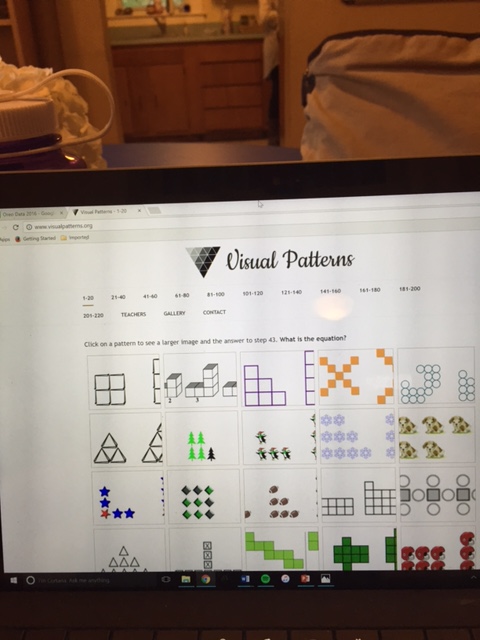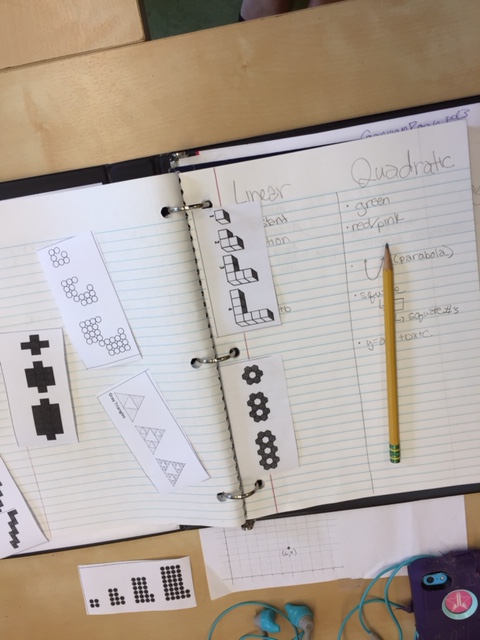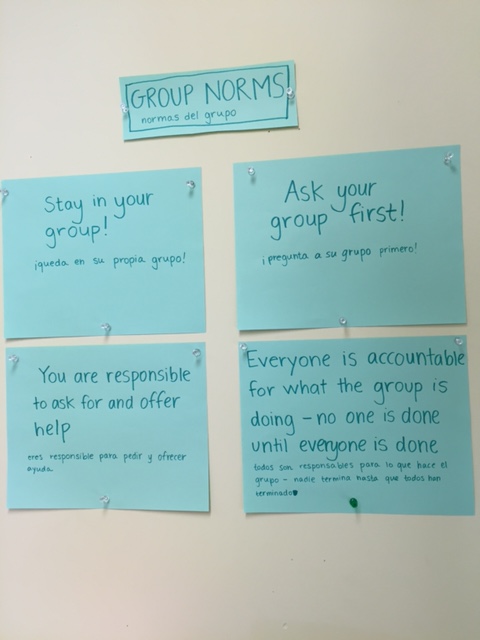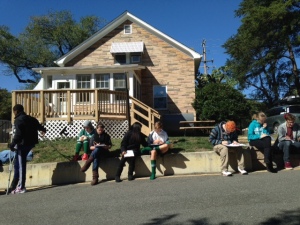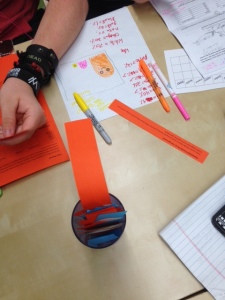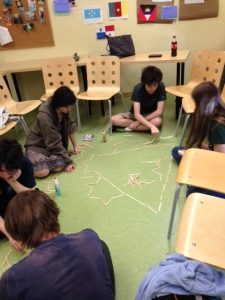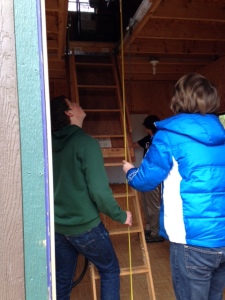Haven’t blogged since November? Oops. In my defense, a great deal of the time between now and then was just winter break, exam review, and then exams. I’m also basically teaching the same things as last year – in Math 4 they just finished up the Math Words Task and are moving on to the Fractals Task, and in Math 3 we just finished up our discussion on Zero and asymptotes. In terms of new things, here are four exciting moments in math:
IM 3 Infinite Series Argument

Before just telling them the formula for an infinite sum, I wanted the kids to really understand what infinite series really mean. We all went outside and chose a little tree. I walked halfway to the tree, then half that distance, then half that distance. I regret not having them walk halfway themselves, but I was cold and wanted to go back inside quickly. Next year I will be a better teacher. I asked, “will I ever get to the tree?” Consensus? Basically.
Before our whole-class discussion I had given them the pie graph to color in and asked them to make a prediction, basically the exact same situation as the tree only with 1/3 in there instead of all 1/2’s. Most of them said “it looks like it’s going to be 3/4 because you keep adding smaller and smaller pieces.” At least two of them simply couldn’t accept that infinite pieces added to a finite area. This led to an excellent debate and demonstrated a clear need for the a/ 1-r formula.
IM 2 Probability and Combinations

If I’m honest, I am not a big fan of probability. It doesn’t always make sense to me, there are lots and lots of formulas, and it never really rings true to me. In an attempt to make my probability unit feel a little less contrived, I took a picture of all of my gym socks. They just felt like a probability word problem to me. I asked the kids to, among other things, tell me the probability that I reach into my sock drawer and get a matching pair, and it’s super unlikely. I also received plenty of unsolicited advice about keeping sock pairs together.
When we got to the combinations part, it was even easier to keep things real-world. I taped some stations around the tables asking about potential boxes of cupcakes or rice bowls at ShopHouse. Have you been there, BTW? It’s Vietnamese/Thai Chipotle and it’s delicious! There are 2,304 different combinations to choose from and 192 are vegan!
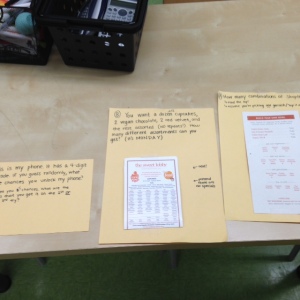
It’s disappointingly difficult to read these but the right one is the ShopHouse menu, the middle one is about getting a dozen assorted cupcakes at The Sweet Lobby (they won cupcake wars!), and the left one asks them for the probability that they can unlock my phone in the 5 tries you get. The probability is 1/2000 so I didn’t feel too nervous leaving my phone out.
This definitely felt real-world. One of the kids almost refused to do the cupcake problem because a dozen seemed too expensive. Two of them saw the ShopHouse menu and were like “OK, I want brown rice, chicken, red curry…” before I asked them to read what the problem was asking. Students in other classes did the problems just because they were curious, which I obviously liked.
To get students to do practice problems like they sometimes just need to do, never underestimate the excitement that some tape and colored paper provides. The math of counting menu items from an actual menu is not different from the math of a worksheet that says “at Todd’s sandwich shop, there are 5 types of bread, 3 types of cheese, and 8 types of meat…” BUT the investment level certainly is.
On the test, I actually wrote a really similar problem to my un-exciting example just there, only the sandwich shop was called Jenny’s Sandwich Jubilee and you could potentially choose a banana bread cottage cheese pastrami sandwich! RIP Mitch Hedberg.
Speaking of Jubilees …
The word “jubilee” is really having a moment in my classroom. Did you know that the word “Jubilee” is a Biblical-times word for a period of debt-forgiveness? Thanks NPR! Evidently they had a jubilee in Iceland for mortgages, and we listened to the story to compare mortgages there with the mortgage formula we learned for US mortgages.
Then we did a search-and-rescue that spelled out JUBILEE. Meanwhile in math 2 I not only named the fictional sandwich shop Jenny’s Sandwich Jubilee, I also asked them to compare potential re-arrangements of JUBILEE, HOLIDAY, and REVELRY.
This was a lot. I should just blog more.
